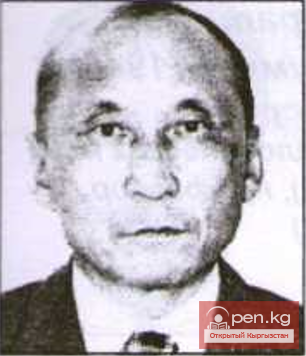
Other lines of connections among the Kyrgyz are significant, especially the ethnic ties with the Kazakh-Nogai circle of tribes.
Attention should be drawn to facts such as the presence among the names of Kyrgyz tribes of the left wing of the ethnonym bechine (pichine), which leads us northwest from Tian Shan into the Oghuz environment, as it is not difficult to see the medieval ethnonym "Pecheneg" in it; in some Kyrgyz legends, the country of Bulgar is mentioned, from which some tribes (jetigen, kushchu, kyurkuryö) came; the memories of the elders preserve echoes of events that took place in Desht-i Kipchak in the 15th century.
The connection between legends and historical events relating to the 15th-16th centuries, noted long ago by Chokan Valikhanov, which indicates close relations between Kazakh and Kyrgyz tribes with the Nogai, has also been confirmed in the ethnographic materials collected by the author. Among them are genealogical legends about the origin of the jetigen tribes, chekir-sayak from the "Nogai" (Nogai, or astarkan nogai), about the ethnic ties of the Kyrgyz with the Karakalpaks, and others.
The Nogai ethnic elements trace back to the era of the Golden Horde. They connect a number of Kyrgyz tribes with the tribes of nomadic Uzbeks of Desht-i Kipchak and with the tribes of Kazakhs and Karakalpaks. Among the names of tribes among the Nogai of the North Caucasus, about a dozen are common with the ethnonyms of the Kyrgyz: naiman, kypchak, konyrat, katagan, uyghur, ktai, and others.
Information and legends about the ethnic and historical ties of the Kyrgyz with the Karakalpaks seem somewhat unexpected but deserve significant attention. Alongside legends about the common origin of the Karakalpaks and Kyrgyz (the latter were called "ak kalpak" by their neighbors — after the name of their headgear) and legends about the origin of the Karakalpaks from the Kyrgyz tribe of adigine, there is a legend about the origin of a large subdivision of the sayak tribe, called kaba, and there is also a legend about clashes between the Kyrgyz and Karakalpaks, allegedly coming from the lower reaches of the Syr Darya. According to a record from Abdykalyk Chorobaev, one of the leaders of the Karakalpaks named Eshmat was killed on Kyrgyz land. After that, enmity began between the Karakalpaks and the Kyrgyz. The Karakalpaks began to attack the Kyrgyz in one place or another. They were asked why they were attacking. They replied: "We attack because we were not given viry kun for Eshmat." Therefore, among some groups of Kyrgyz, the expression is prevalent: karakalpak Eshmattyn ku-nunday bold (like kunu for the Karakalpak Eshmat). The reliability of such information is confirmed by legends recorded among the Karakalpaks by T. A. Zhdanko. One of them states: "After the death of Ormambet-bi (a prominent Nogai mirza,— S. A.), the Kyrgyz attacked the Karakalpaks, which is why they left Turkestan." These clashes apparently date back to the turn of the 16th-12th centuries. It is not excluded that the contact between the Kyrgyz and Karakalpaks could also have occurred in the early 18th century, when the so-called upper Karakalpaks lived along the middle reaches of the Syr Darya.














































